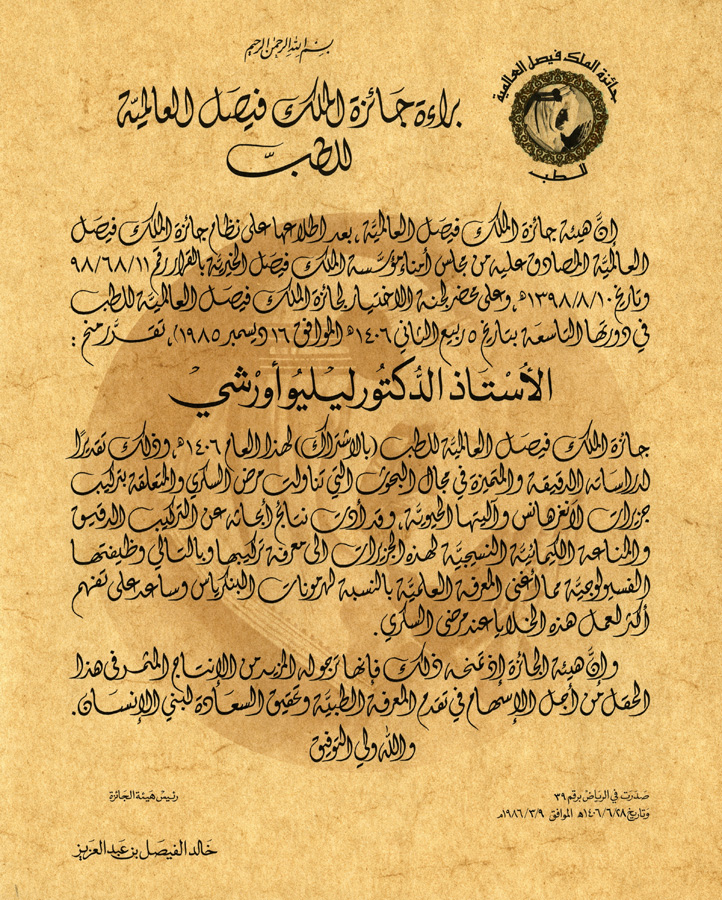

Professor Lelio Orci
King Faisal Prize in Medicine 1986 Laureate
Topic: "Diabetes Mellitus "
Science and Medicine are perhaps the most international, world-wide human preoccupation

Lelio Orci obtained his MD from the College of Medicine at Rome University in 1964. He started his career as an assistant professor at the Institute of Histology and Embryology, University of Geneva Medical School in 1966, and rose to full professorship in 1972. He was appointed as a Chairman of the Department of Morphology (now the Department of Cell Physiology and Metabolism) at the Medical School of Geneva University in 1972. He was also a researcher or a visiting professor at several universities, mostly in the United States.
Professor Orci dedicated his entire career to cell biology research and the study of the islets of Langerhans, in particular the beta cells. He carried out pioneering studies on the ultrastructure and immunocytochemistry of beta cells. His studies were instrumental for better understanding of the structure and function of those cells, the mechanism of Insulin synthesis, storage and secretion, the secretion and mode of action of Glucagon and the regulation of pancreatic hormone secretions.
In later years, he collaborated with Professor Rothman and other scientists in a series of landmark studies on the molecular basis of vesicular trafficking. These studies have profoundly enriched our knowledge of Diabetes and contributed to the development of drugs to control it and have granted Professor Orci the status of the most talented electron microscopist of his generation.
Professor Orci’s seminal contributions were published in more than 300 papers in international journals. According to ISA and The Scientist, he was one of the most cited researchers in the field of diabetes research. His accomplishments were recognized by the international scientific community throughout the world. He was awarded an honorary doctorate in Medicine from the University of Guelph in Canada. He was also an honorary member of the Argentinian Society of Physiological Sciences.
This biography was written in the year the prize was awarded.
- He held many positions including:
- He was appointed as a Professor Emeritus at the University of Geneva in 2004.
- Honorary Fellow of the European Association for Diabetes Research in 2007.
- Distinguished Professor in the Department of Cell Physiology and Metabolism.
- Member of the Swiss Academy of Medical Sciences.
- Member of the US National Academy of Science.
- Member of the European Academy of Science.
- Member of the Italian Diabetes Society.
- Member of the American Association for the Advancement of Science.
- He received many awards and honors including:
- Honorary Doctorate in Medicine from the University of Louvain in Belgium.
- Honorary Doctorate in Medicine from the University of McGill in Canada.
- Order of Commander of Honor by the Italian Government.
- Special Golgi Award from the European Association for the Study of Diabetes in 1986.
- Elliot P. Joslin Award from the American Diabetes Association in 1991.
- Leon Lombardi Prize in 2007.
- The Lelio Orci Award for advances in cell biology was established in his honor in 2015.
- Professor Lelio Orci passed away in Geneva on 22/10/2019.



